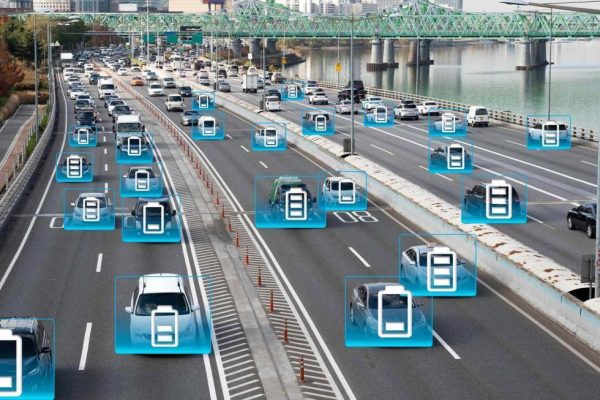AVER as part of AVERE welcomes the European Commission’s initiative to amend the Renewable Energy Directive, which has the potential to greatly accelerate the decarbonization of the EU economy by promoting the use of renewable energy – a key step towards achieving the Union’s greenhouse gas emission reduction target of at least 55% by 2030, and to contribute to achieving climate neutrality by 2050.
The EU’s road transport sector is currently seeing a major transformation, with the sales share of electric vehicles having tripled to over 10% in 2020, and a complete phase-out of internal combustion engines in cars proposed for 2035. The proposed revision of the RED contains some promising approaches to ensure that this rapidly growing share of zero-emission vehicles on European roads is powered by clean energy, taking full advantage of its decarbonisation potential. The mass uptake of EVs also offers potential for the use of smart charging on a broader scale to enhance grid management, boost the penetration of renewable energy in the electricity system, and offer additional economic advantages to consumers.
Against this background, AVER as part of AVERE supports many of the proposed changes of the Commission; notably in regard to setting higher renewable energy targets for the transport sector, establishing a fuel-neutral credit trading mechanism, and making smart charging the norm for newly deployed private chargers. At the same time, scope for improvement remains in various provisions of the proposal, in particular when it comes to promoting direct electrification and enabling a level playing field between RNFBOs and electricity.
This paper thus sets out AVERE’s position and policy recommendations regarding the revised Directive. AVERE stands ready to engage with EU policymakers as to how to support European mobility run on renewable electricity through RED II in a way that maximises environmental, economic and societal benefits.
AVERE Recommendations
The ambition of the proposed targets should therefore at least be maintained.

However, the currently proposed wording limits the scope of the new mechanism to only electricity supplied through public recharging stations. If the scope of the mechanism remains limited to public charging only, most of the renewable electrons charged would be excluded from the system because most charging (i.e at least 70%) will happen at home and in the workplace in coming years. An exclusion of private charging would also risk distorting the charging market: applying the credit mechanism only to a small subset of existing solutions would mean that fair competition between all solutions on the market would be undermined, and could lead to counterproductive rollout strategies focussing too strongly on public charging¹.
We therefore recommend to allow any type of charging, including private charging, to be captured as part of national credit trading mechanisms to be set up.
AVERE acknowledges that the new mandate contains some “implicit” multipliers reflecting the efficiency of direct electrification to a similar degree as RED II when compared to, for example, biofuels. However, the introduction of a GHG-based mandate will require significant changes to the energy-based architecture currently implemented in 24 out of 27 EU member states, which may not only result in delays in transposition and implementation, but also spark controversy in upcoming Council discussions.
Should member states insist on retaining the possibility of accounting by means on an energy-based transport target, the previous multiplier of four for renewable electricity would have to be re-introduced in order to avoid a heavily skewed playing field against renewable electricity in countries using an energy-based system.

AVERE acknowledges that the provisions relating to an additionality framework for electricity in transport have been deleted, correctly arguing that electrification in itself is a means to decarbonise the transport sector due to its superior energy efficiency. While EVs do reduce emissions even when not run on additional renewable energy, AVERE is concerned about maintaining a level playing field with other energy carriers, notably hydrogen
Under the upcoming Delegated Act on Additionality, producers of hydrogen will have the opportunity to prove if their hydrogen was produced from additionally deployed renewable electricity, rather than the electricity mix of the respective member states. Similar avenues should be provided for electricity supplied to electric vehicles – i.e., the RED and the national credit mechanisms established under it should allow for the accounting of cases where increased shares of renewable electricity, beyond than the national energy mix, is used to charge. More precisely, operators should have the possibility to resort either to the Member states’ average national share of renewable electricity or to the real time renewable share as will be provided under the proposed art 20a(1). This would serve to further encourage the uptake of renewable energy sources.

Going forward, bidirectional functionalities may, in certain use cases, offer further economic benefits to users and maximise the contribution of renewable energy to the grid. Evaluations by national authorities as to where V2G should be deployed should take into account inter alia expected impacts on the grid, economic cost-benefit analyses and technical feasibility.
Going forward, it will be crucial to ensure the definitions and key provisions on smart and bidirectional charging stay aligned when amending the proposals of AFIR and RED, in order to facilitate a coherent, clear and effective legislative framework. The upcoming EPBD should further supplement and strengthen the requirements under RED, mandating smart charging readiness for all new and renovated charging infrastructure in residential and non-residential buildings, and requiring chargers to be integrated in smart systems, such as buildings’ energy management systems or load management systems.
In order to ensure regulatory consistency, AVERE therefore recommends addressing all aspects relating to battery data exclusively in sector-specific legislation (i.e., the Battery Regulation), which seems to be the more appropriate legal instrument for battery-related requirements than the more horizontal Renewable Energy Directive.
¹ The detailed rollout and implementation of the credit mechanism will be implemented differently in each Member state. Therefore, EU-level obligations should be limited to mandating 1.the inclusion of electricity in fuel supplier compliance schemes, 2. The establishment of a credit mechanism system covering any type of charging used for electric vehicles.




